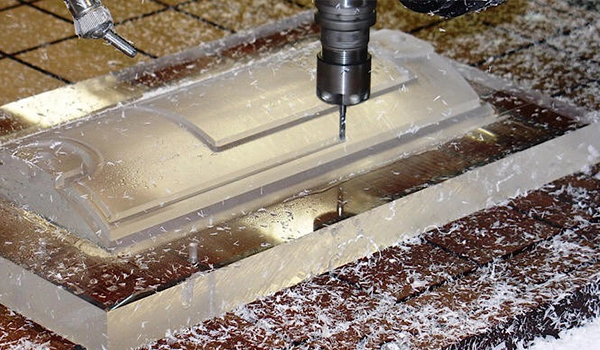This article will discuss in detail the practical technology and skills of acrylic CNC machining, including setting recommendations, processing precautions, cooling strategies, commonly used tool selection, etc., to help practitioners improve processing quality and efficiency.

First, the characteristics and application of acrylic materials
Acrylic (PMMA) is a transparent, strong and high light transmittance thermoplastic, widely used in billboards, light boxes, transparent shields, etc.
Because acrylic is resistant to ultraviolet light and chemical corrosion, it has an optical transparency similar to glass and is a good substitute for glass. At the same time, its surface hardness is moderate, and it is easy to grind during processing, but it is also easy to produce scratches, so it has higher requirements for tools and processing conditions.
Second, CNC processing of acrylic key Settings
1. Feed rate and cutting depth: It is recommended to set the feed rate between 75 and 300 IPM (inches per minute) to prevent overheating or material fragmentation during cutting. The cutting depth is recommended to be controlled at half of the tool diameter to maintain cutting stability.
2. Spindle sped: the spindle speed is usually set at about 18,000 RPM, which can obtain a clean cutting effect without overheating.
3. Cooling system: acrylic is easy to melt due to friction, cooling is particularly important. A spray cooling system or an air cooling system can be used to keep the tool and the surface of the material cold and prevent the edges from melting.
Third, acrylic CNC processing skills
1. Choose the right tool: O-flute or 1/4 inch diameter solid carbide tool is recommended. This type of tool has a large chip discharge space, which can effectively reduce material debris and reduce cutting edge friction.
2. Multiple shallow cutting: The use of multiple shallow cutting can remove materials layer by layer, reduce heat accumulation, and help improve the cutting accuracy and surface quality of the finished product.
3. Avoid melting and rebonding: The acrylic material can be cooled to a low temperature before cutting by using a large diameter tool with a high cutting speed to reduce the material's rebonding due to friction and heat.
Fourth, surface treatment and fixing skills
1. Prevent vibration: acrylic is relatively fragile, easy to cause surface scratches or uneven cutting due to vibration during processing. The acrylic is firmly fixed using a vacuum adsorption table or fixture to reduce workpiece vibration and help to obtain a smooth surface effect.
2. Grinding and polishing: After processing, you can use polishing paste or ultraviolet light for secondary treatment to further improve the surface finish. This treatment can not only improve the visual effect, but also reduce the small scratches produced during processing.
Five, acrylic CNC processing common problems and solutions
1. Cutting edge cracking: Choose the right tool, such as an O-slot knife or a carving knife with an inclination of 60°, which is suitable for acrylic cutting and can reduce the probability of cracking.
2. Melting phenomenon: Increase the feed speed and use spray cooling to ensure that the stay time of the tool on the material is as short as possible to avoid the material melting caused by excessive friction.
By mastering these detailed processing techniques and setting methods, operators can significantly improve the quality of acrylic CNC machining products, reduce scrap rates and optimize processing time.